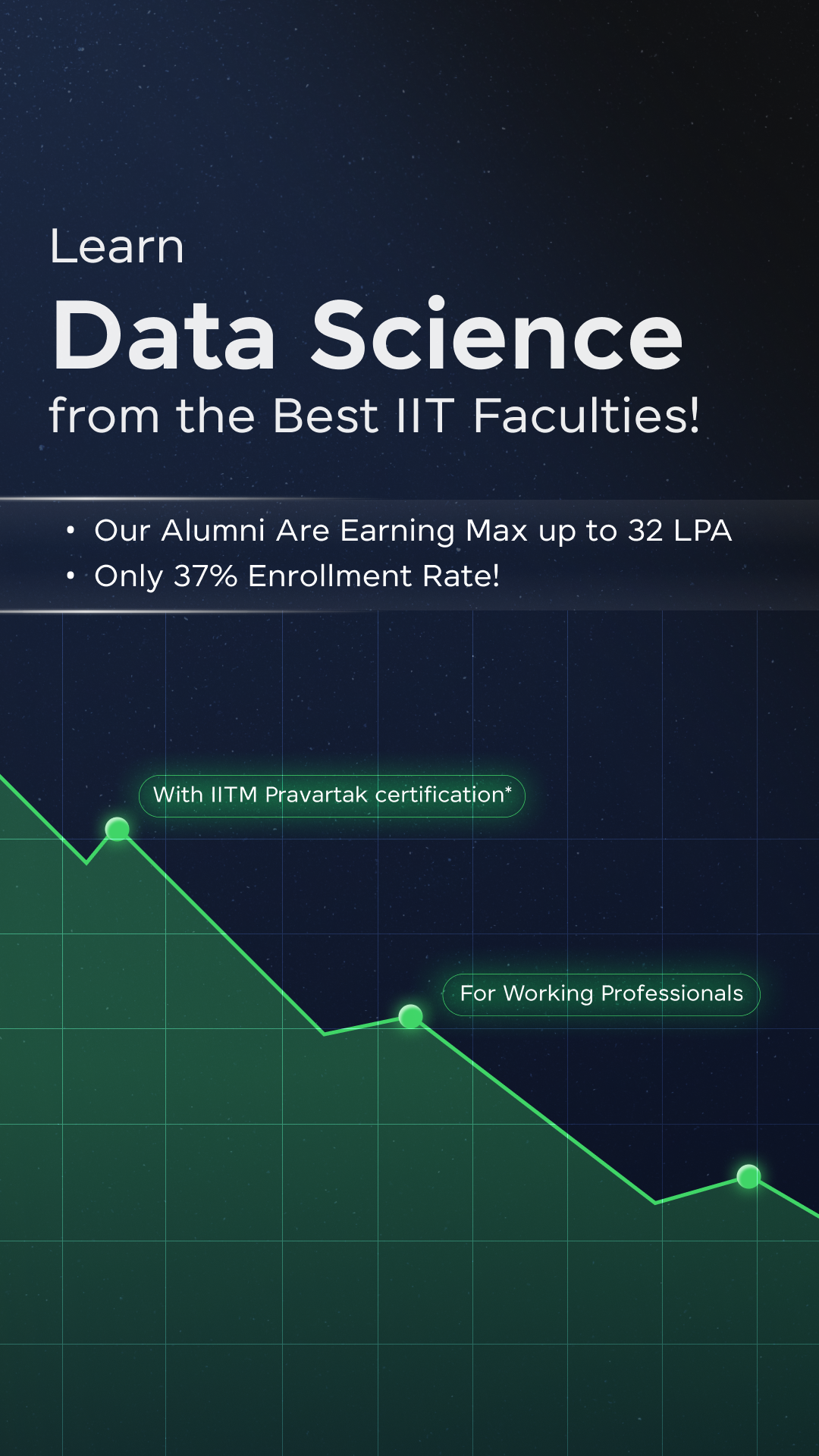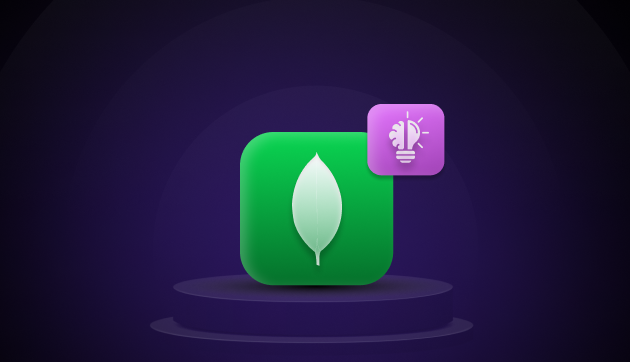![The Ultimate Battle: MongoDB vs SQL - Top Differences [2025] 1 Post thumbnail](https://www.guvi.in/blog/wp-content/uploads/2024/05/The-Ultimate-Battle_-MongoDB-vs-SQL
Top-Differences-2025-1.webp)
The Ultimate Battle: MongoDB vs SQL – Top Differences [2025]
May 07, 2025 8 Min Read 7864 Views
(Last Updated)
In today’s rapidly evolving digital landscape, the decision between MongoDB vs SQL is more than a mere choice of database technologies—it’s a strategic decision that can significantly impact the performance, scalability, and overall success of your applications.
MongoDB, with its schema-less structure, offers flexibility in storing JSON-like documents, making it a popular choice for applications requiring dynamic, unstructured data.
On the other hand, SQL databases, powered by time-tested relational models, are preferred when data integrity and relationships (expressed through joins and rows) are paramount, as seen in Oracle and other traditional RDBMS.
![The Ultimate Battle: MongoDB vs SQL - Top Differences [2025] 2 RDBMS and MongoDB](https://www.guvi.in/blog/wp-content/uploads/2024/09/1-1-1-1200x628.png)
This article delves into the critical aspects of MongoDB vs SQL, offering you a comprehensive comparison across various dimensions, including data storage and schema, query language and operations, scalability, performance and reliability, and much more.
Table of contents
- 1) History and Background
- 1) MongoDB Overview
- 2) SQL Overview
- 3) Technical Differentiation Table: MongoDB vs SQL
- 2) Data Storage and Schema
- 1) How MongoDB Stores Data
- 2) How SQL Stores Data
- 3) Schema Flexibility
- 3) Query Language and Operations
- 1) MongoDB Querying
- 2) SQL Querying
- 3) Supported Operations
- 4) Scalability
- 1) Horizontal Scaling in MongoDB
- 2) Vertical Scaling in SQL
- 3) Replication Methods
- 5) Reliability
- 1) MongoDB:
- 2) SQL:
- 6) Use Cases and Applications
- 1) When to Use MongoDB
- 2) When to Use SQL
- 3) Common Use Cases
- 7) Security between MongoDB vs SQL
- 1) MongoDB
- 2) SQL
- Takeaways...
- FAQs
- What is MongoDB best for?
- Is NoSQL really faster than SQL?
- Is MongoDB frontend or backend?
- Which DB is faster?
1) History and Background
1.1) MongoDB Overview
- MongoDB, a leading figure in the NoSQL database landscape, was launched in 2009. It emerged from the increasing need to handle unstructured data that traditional SQL databases struggled with.
- This type of database is particularly adept at storing JSON-like documents, which allows for a more flexible, schema-less approach to data management.
- MongoDB was developed by MongoDB Inc., originally known as 10gen, which was started in 2007 by Dwight Merriman, Eliot Horowitz, and Kevin Ryan.
- MongoDB’s architecture is designed to scale horizontally, adding more servers to handle increased load, a significant advantage over traditional vertical scaling in SQL databases.
- This feature, coupled with its ability to store data in a format that aligns closely with how data is used in applications, significantly simplifies the development process and reduces the time from concept to deployment.
1.2) SQL Overview
- SQL, or Structured Query Language, has been the backbone of data management since its inception in the early 1970s, developed by Donald D. Chamberlin and Raymond F. Boyce at IBM.
- It was designed to interact with relational databases, where data is structured in rows and columns and has a strict schema that must be adhered to.
- SQL databases are known for their robust data integrity and the ability to handle complex queries efficiently.
- Over the years, SQL has evolved through several iterations, such as SQL-92, SQL:1999, and SQL:2011, each adding new features and capabilities to meet the growing demands of data storage, retrieval, and processing.
- The most recent, SQL:2023, continues to adapt to the latest trends in data management, including support for JSON and other modern data interchange formats.
Also Explore: MongoDB vs. MySQL: Which Database Should You Learn?
1.3) Technical Differentiation Table: MongoDB vs SQL
To provide a clear comparison, here’s a table that outlines key technical differences between MongoDB and SQL:
| Feature | MongoDB | SQL |
|---|---|---|
| Data Structure | JSON-like documents, schema-less | Structured rows and columns, strict schema |
| Query Language | MongoDB Query Language (MQL) | Structured Query Language (SQL) |
| Scalability | Horizontal scaling (add more servers) | Vertical scaling (upgrade existing servers) |
| Data Integrity | Strong consistency, ACID-compliant | High, easy-to-change data schema |
| Use Cases | Real-time analytics, content management, IoT | Financial systems, applications requiring complex transactions |
| Flexibility | High, easy to change data schema | Low, changes to schema require alterations to all related data |
This table highlights the fundamental technical distinctions that can guide you in choosing the appropriate database technology for your specific needs, whether you require the flexibility and scalability of MongoDB or the robust data integrity and complex querying capabilities of SQL databases.
Before we move into the next section, ensure you have a good grip on data science essentials like Python, MongoDB, Pandas, NumPy, Tableau & PowerBI Data Methods. If you are looking for a detailed course on Data Science, you can join GUVI’s Data Science Career Program with Placement Assistance. You’ll also learn about the trending tools and technologies and work on some real-time projects.
Additionally, if you want to explore MongoDB or SQL through a self-paced course, try GUVI’s self-paced MongoDB or SQL course.
2) Data Storage and Schema
2.1) How MongoDB Stores Data
- In MongoDB, data is stored in collections, which are analogous to tables in MySQL but with a significant twist: they do not enforce a schema.
- This means a collection can house many documents, and these documents can contain data in a JSON-like format comprising key-value pairs.
![The Ultimate Battle: MongoDB vs SQL - Top Differences [2025] 3 How mongodb stores data](https://www.guvi.in/blog/wp-content/uploads/2024/09/3-1-1-1200x628.png)
- The structure allows for a high degree of flexibility as each document in the same collection can have a different structure.
- This characteristic is particularly advantageous when dealing with varied and rapidly evolving data sets, such as those generated by internet applications and IoT devices which are predominantly non-structured.
2.2) How SQL Stores Data
- Contrastingly, SQL databases like MySQL are based on a relational model where data is stored in tables defined by a strict and predefined schema.
![The Ultimate Battle: MongoDB vs SQL - Top Differences [2025] 4 How does SQL works?](https://www.guvi.in/blog/wp-content/uploads/2024/09/2-1-1-1200x628.png)
- Each table consists of rows and columns, and each column has a designated data type. Relationships between tables are established through primary keys and foreign keys.
- For instance, an EmployeeID column might be the primary key in an Employee table and a foreign key in a Payments table, creating a link between the two.
- This relational structure ensures referential integrity, meaning that all references are consistent and data is reliably interconnected.
2.3) Schema Flexibility
a) MongoDB:
- The flexibility of MongoDB’s schema-less design allows for dynamic modifications and on-the-fly adjustments without service interruptions.
- This is a stark contrast to the rigid schema requirements of SQL databases, where altering the database schema often requires significant downtime and complex migrations, especially as the database scales up.
![The Ultimate Battle: MongoDB vs SQL - Top Differences [2025] 5 Root Node](https://www.guvi.in/blog/wp-content/uploads/2024/09/4-1-1-1200x628.png)
- MongoDB’s approach supports a more agile development process, enabling developers to iterate quickly and integrate new features without the constraints imposed by a fixed data structure.
b) SQL:
- In SQL databases, any changes to the schema, such as adding a new column, typically necessitate modifications across the entire database, impacting related data and potentially the application’s performance.
- This adds overhead and complexity, slowing down development teams who must ensure that their application logic continuously aligns with the relational data structure.
The differentiation in data storage and schema management between MongoDB and SQL highlights a fundamental decision point based on the specific needs of your application.
If your priority is flexibility and handling unstructured data with ease, MongoDB offers significant advantages.
Conversely, if your application demands strict data integrity and complex transactional operations, the traditional SQL approach may be more appropriate.
Also Read: Top 7 Reasons To Learn MongoDB!
3) Query Language and Operations
3.1) MongoDB Querying
- MongoDB utilizes its own MongoDB Query Language (MQL), which is designed for ease of use by developers.
- MQL is inherently different from SQL as it is based on JavaScript, making it a natural fit for web developers.
![The Ultimate Battle: MongoDB vs SQL - Top Differences [2025] 6 MongoDB Querying](https://www.guvi.in/blog/wp-content/uploads/2024/09/5-1-1-1200x628.png)
- The flexibility of MQL allows for operations such as
group,skip,aggregate,sort, and more, directly aligning with JavaScript’s syntax and functionality. - This design choice significantly reduces the learning curve for developers who are already familiar with JavaScript, enabling quicker and more intuitive database interactions.
- One of the unique aspects of querying in MongoDB is its non-reliance on joins. Data in MongoDB is often denormalized, meaning related data is stored together within the same document.
This approach eliminates the need for costly join operations, which are common in SQL databases and can lead to faster query performance especially when dealing with large datasets.
3.2) SQL Querying
- In contrast, SQL databases use the well-established Structured Query Language (SQL) for defining and manipulating data.
- SQL is known for its powerful querying capabilities, including advanced analytics functions like filters, joins, merge, and aggregation.
- These features make SQL particularly effective for complex query requirements and scenarios where data integrity and relationships between different data sets are crucial.
![The Ultimate Battle: MongoDB vs SQL - Top Differences [2025] 7 SQL Querying](https://www.guvi.in/blog/wp-content/uploads/2024/09/6-1-1-1200x628.png)
- SQL’s approach to data querying is more rigid compared to MongoDB, with a focus on data normalization.
- This often requires multiple tables to be joined in a query to pull related data, which can become a performance bottleneck as the size of the data grows.
- However, the maturity of SQL means it is supported by a vast array of tools and platforms, enhancing its versatility in various business and data analysis applications.
3.3) Supported Operations
Both MongoDB and SQL offer a range of operations that cater to different use cases and developer preferences.
MongoDB:
- MongoDB, for example, has introduced the MongoDB BI Connector to bridge the gap in analytics capabilities.
- This tool allows MongoDB to integrate with popular business intelligence platforms like Tableau and Qlik by translating SQL queries into MQL and vice versa, thus providing a workaround for MongoDB’s traditional limitations in analytics.
SQL:
- On the other hand, SQL servers have been enhancing their support for modern data types like JSON, although this integration often requires proprietary SQL extensions and can introduce additional complexity.
- SQL’s robust transactional support, with features like
MERGE INTOandUNION ALL, continues to make it a strong choice for applications that require high levels of data consistency and reliability.
In summary, MongoDB offers a more developer-friendly approach with its use of JavaScript and schema-less design, while SQL provides robust and detailed querying capabilities for complex data analysis.
Also Read: Roles and Responsibilities of a Data Scientist
4) Scalability
![The Ultimate Battle: MongoDB vs SQL - Top Differences [2025] 8 Scalability](https://www.guvi.in/blog/wp-content/uploads/2024/09/8-1-1-1200x628.png)
4.1) Horizontal Scaling in MongoDB
When you’re dealing with MongoDB, scalability is primarily achieved through horizontal scaling, also known as scaling out.
This method involves adding more nodes to your database environment to distribute the workload more evenly. Unlike vertical scaling, horizontal scaling allows you to expand your database without disrupting the existing servers’ capacity.
![The Ultimate Battle: MongoDB vs SQL - Top Differences [2025] 9 Horizontal Scaling](https://www.guvi.in/blog/wp-content/uploads/2024/09/7-1-1-1200x628.png)
- Ease of Implementation: Adding new nodes to a MongoDB cluster is relatively straightforward and can be done without significant downtime.
- Cost-Effectiveness: Although initial setup and licensing can be costly, the long-term scalability benefits outweigh these initial investments.
- Flexibility: Horizontal scaling provides high flexibility, allowing you to add resources as needed without overhauling your entire system.
However, there are challenges such as increased complexity in managing more nodes and higher operational costs for maintaining multiple servers.
Despite these, horizontal scaling is ideal for applications with large, growing datasets like real-time analytics and big data processing.
4.2) Vertical Scaling in SQL
SQL databases, on the other hand, often rely on vertical scaling, which involves adding more power to your existing machines. This can include upgrading CPUs, increasing RAM, or enhancing storage capabilities.
- Simplicity: Vertical scaling is generally simpler to implement as it involves upgrades to existing hardware.
- Cost Efficiency: It often requires less investment upfront compared to setting up new servers for horizontal scaling.
- Management: Easier management and maintenance since you’re dealing with fewer physical or virtual machines.
The primary limitation of vertical scaling is that it has an inherent ceiling; you can only upgrade a machine to the extent that technology allows.
Once that limit is reached, further performance improvements can only be achieved through horizontal scaling or by enhancing the application’s software architecture.
Learn More About Horizontal vs Vertical Scaling for Efficient System Design
4.3) Replication Methods
Replication is a critical aspect of database management, ensuring data availability and redundancy. MongoDB and SQL databases handle replication differently:
- MongoDB: Utilizes a replica set to manage replication. This is a group of MongoDB servers that hold the same data set, providing fault tolerance and high availability. Replica sets are easy to set up and manage, promoting data redundancy and system resilience.
- SQL Server: Supports several replication methods, including transactional, snapshot, and merge replication. Each type serves different needs:
- Transactional Replication: Maintains high consistency by ensuring that all changes to the publisher are automatically replicated to the subscriber in real time.
- Snapshot Replication: Involves periodic snapshots of the database, useful for less dynamic data sets.
- Merge Replication: Allows changes from multiple sources to be merged, ideal for distributed server environments where updates are made at various locations.
As you can see, both MongoDB and SQL offer robust solutions for scaling and replication.
5) Reliability
5.1) MongoDB:
MongoDB ensures reliability through several mechanisms:
- Automatic Failover: MongoDB Atlas can automatically switch to a secondary node in seconds if the primary node fails, minimizing downtime.
- Replication: Data is replicated across multiple nodes and regions, enhancing data durability and availability. MongoDB uses a primary-secondary replication model to ensure data consistency across nodes.
- Write Concerns: These are configurable settings that let you balance between write durability and performance, depending on your application’s needs.
MongoDB’s architecture supports multi-data center deployments, which not only provides redundancy but also keeps the data geographically closer to users, reducing access latency.
5.2) SQL:
SQL databases are known for their robust transactional integrity:
- ACID Compliance: SQL databases are strongly consistent and maintain atomicity, consistency, isolation, and durability (ACID), crucial for transactions.
- Locking and Isolation Levels: These mechanisms prevent transaction interference and ensure data integrity during concurrent accesses.
- Write-Ahead Logging (WAL): This feature ensures that no data is lost in case of a system crash by logging changes before applying them to the database.
- Checkpoints: Regular checkpoints help in maintaining data consistency and aid in faster recovery during failures.
SQL’s structured approach and strict schema enforcement also contribute to its reliability, ensuring that all data adheres to predefined formats and relationships.
Both MongoDB and SQL bring distinct performance and reliability characteristics to the table, making them suitable for different types of applications.
Thus understanding the reliability of MongoDB vs SQL is crucial for your project development.
Must Read: Top 10 High Paying Non-Coding Jobs in Data Science in 2025
6) Use Cases and Applications
6.1) When to Use MongoDB
MongoDB shines in scenarios where you need to handle large volumes of data with a schema that may evolve over time. It’s particularly suited for applications involving:
![The Ultimate Battle: MongoDB vs SQL - Top Differences [2025] 10 real-life examples of MongoDB use cases](https://www.guvi.in/blog/wp-content/uploads/2024/09/9-1-1-1200x628.png)
- Dynamic Schema: Flexibility is key in applications like content management systems and e-commerce platforms, where each document can vary from the next without the need to alter a central schema.
- High Write Loads: MongoDB handles large numbers of writes and updates efficiently, making it ideal for logging and real-time analytics.
- Scalability Needs: If your application demands horizontal scaling with data distributed across many servers, MongoDB’s architecture supports this out of the box.
6.2) When to Use SQL
SQL databases are your go-to choice when dealing with applications that require high data integrity and complex queries involving multiple tables. They are particularly beneficial in:
- Structured Data Interactions: Applications like banking systems or any other transaction-oriented systems where data integrity and security are critical.
- Complex Transactions: Where multiple operations on data must be treated as a single atomic operation to maintain data integrity.
- Reporting and Analytics: SQL’s powerful query language is adept at handling complex analytics and reporting, especially when data relationships are deep and intricate.
6.3) Common Use Cases
Both MongoDB and SQL databases are used across various industries, but they shine in particular scenarios based on their inherent capabilities:
- Marketing and Business Analytics: SQL databases support complex queries required for deep analytics, often used in marketing and business analysis. For instance, SQL is used to segment customer data, manage ad placements, and optimize user experience.
- Healthcare Applications: SQL’s ability to handle complex queries and ensure data integrity makes it suitable for managing patient records in healthcare databases.
- E-commerce: MongoDB is often used in e-commerce for its ability to quickly adapt to changes such as adding new product categories or dynamic pricing models without downtime.
- IoT and Real-Time Data: MongoDB’s flexible schema and high write speeds make it ideal for IoT applications, where devices may transmit new types of data as functionalities evolve.
Both MongoDB and SQL offer unique advantages that can be leveraged depending on the specific requirements of your project.
Whether it’s the flexible, schema-free document model of MongoDB or the robust, relation-heavy structure of SQL, understanding these use cases in the MongoDB vs SQL battle will help you make an informed decision that aligns with your data management needs.
Also Explore: Can A Commerce Student Do Data Science?
7) Security between MongoDB vs SQL
7.1) MongoDB
MongoDB’s security framework is robust, providing multiple layers of protection to safeguard your data. Here’s how MongoDB addresses various security concerns:
- Authentication and Authorization: MongoDB uses a role-based access control model that assigns users to roles, each with specific permissions over datasets and database operations. This ensures that only authorized users can access sensitive data or perform critical database functions.
- Encryption: All communication in MongoDB is encrypted using TLS, ensuring that data transmitted over networks is secure from eavesdropping. Additionally, MongoDB supports encryption of data at rest using WiredTiger encryption, and with MongoDB 7.0, Queryable Encryption allows for encrypted queries on sensitive fields without decryption.
- Injection Protection: MongoDB is designed to prevent traditional SQL injection attacks by using BSON (Binary JSON) for queries. Unlike SQL, where queries are string-based, BSON uses objects. This design significantly reduces the risk of injection attacks. However, MongoDB can execute JavaScript, which introduces the potential for JavaScript injection. To mitigate this, MongoDB allows disabling server-side JavaScript execution.
7.2) SQL
SQL databases, including popular systems like MySQL, have a comprehensive set of security features that protect data integrity and prevent unauthorized access:
- Authentication and Authorization: SQL databases provide extensive controls over user access, allowing database administrators to define and enforce permissions at granular levels. Users can be granted specific privileges on tables, views, and procedures, ensuring that they can only access data necessary for their roles.
- Encryption: SQL databases support encryption both at rest and in transit. Features like Transparent Data Encryption (TDE) and SSL/TLS are commonly used to protect data files and secure connections between clients and servers.
- Injection Attacks: SQL databases are susceptible to SQL injection if not properly managed. Best practices include using prepared statements and parameterized queries to sanitize inputs, thereby preventing malicious code from being executed.
Kickstart your Data Science journey by enrolling in GUVI’s Data Science Career Program where you will master technologies like MongoDB, Tableau, PowerBI, Pandas, etc., and build interesting real-life projects.
Alternatively, if you want to explore MongoDB or SQL through a self-paced course, try GUVI’s self-paced MongoDB or SQL course.
Takeaways…
Through the comprehensive exploration of MongoDB vs SQL, we have navigated the contours of each database’s capabilities, understanding their unique advantages and scenarios where each excels.
While MongoDB emerges as a leader in scenarios demanding agility and scalability, SQL continues to be the cornerstone of systems requiring rigorous data consistency and complex relationship handling.
The MongoDB vs SQL battle thus hinges not on the quest for a superior technology but on identifying the right tool that aligns with the operational needs, performance expectations, and long-term vision of your project.
Also Read: What is NoSQL? A Comprehensive Guide To Get You Started With NoSQL [2025]
FAQs
MongoDB is best for handling large-scale, unstructured data, making it ideal for applications requiring high performance, flexibility, and scalability, such as real-time analytics, content management, and IoT applications.
NoSQL databases can be faster than SQL databases for certain use cases, particularly when dealing with large volumes of unstructured data and requiring horizontal scalability. Read this article to learn more.
MongoDB is a backend database system used to store and manage data for applications. It does not handle frontend tasks such as user interface rendering.
Generally, NoSQL databases like MongoDB are faster for handling large-scale, unstructured data, while SQL databases like PostgreSQL or MySQL may perform better for complex queries and structured data.



























Thanks for clear, well outlined and easy reading article. I think I have now made my decision on which DB I chose :)